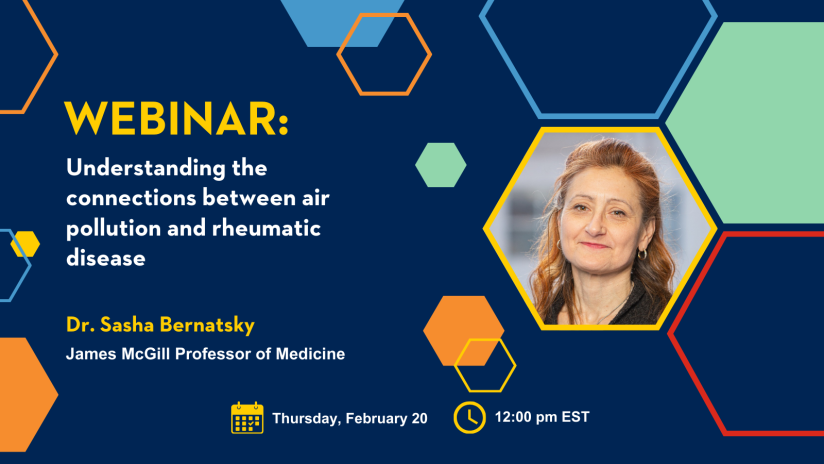Understanding the connections between air pollution and rheumatic disease

About the webinar
Join Dr. Sasha Bernatsky, a leading researcher in rheumatic disease and environmental health, as she delves into how environmental exposures impact autoimmunity and inflammation. Drawing on her extensive work with CanPath, Dr. Bernatsky has demonstrated potential associations between air pollutants, including PM2.5, and autoimmunity and rheumatic diseases.
In this session, Dr. Bernatsky will also preview her new research on the impact of wildfire smoke and temperature extremes on rheumatic diseases in Canada, supported by recent CIHR funding. Researchers interested in environmental health, autoimmune diseases, and leveraging population-based data for innovative studies won’t want to miss this opportunity to gain valuable insights and explore future directions in the field.
Download the slide deckDownloadAbout the presenter

Sasha Bernatsky, MD PhD, is a rheumatologist, a James McGill Professor of Medicine at McGill University and a Senior Scientist of the Centre for Health Outcomes Research at the Research Institute of the McGill University Health Centre. Dr. Bernatsky is also affiliated with the McGill Environmental Epidemiology Research Group, a network with expertise in pharmacology/toxicology, and environmental sciences. She is a member of the Canadian Urban Environmental Health Research Consortium (CANUE), the Systemic Lupus International Collaborating Clinics (SLICC), and the Canadian Network for Improved Outcomes in SLE (CaNIOS). Her research focuses mainly on outcomes in rheumatic diseases, pharmacoepidemiology, and air pollution’s effects on health.
Learn more about air pollution and rheumatic disease
Discover how air pollution may play a role in immune dysfunction and autoimmune disease in our webinar recap featuring Dr. Sasha Bernatsky and Dr. Trevor Dummer. Learn how CanPath’s extensive health data and biological samples, combined with CANUE’s environmental exposure datasets, offer researchers a unique opportunity to explore the long-term health impacts of fine particulate matter (PM2.5), including wildfire smoke. Whether you’re investigating environmental risk factors or looking to integrate robust population health data into your research, this discussion highlights valuable insights and resources to advance your work.